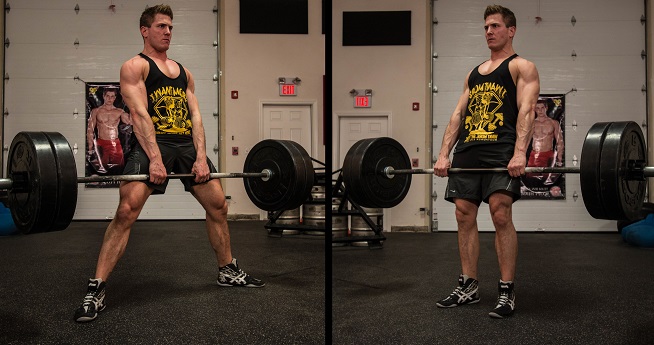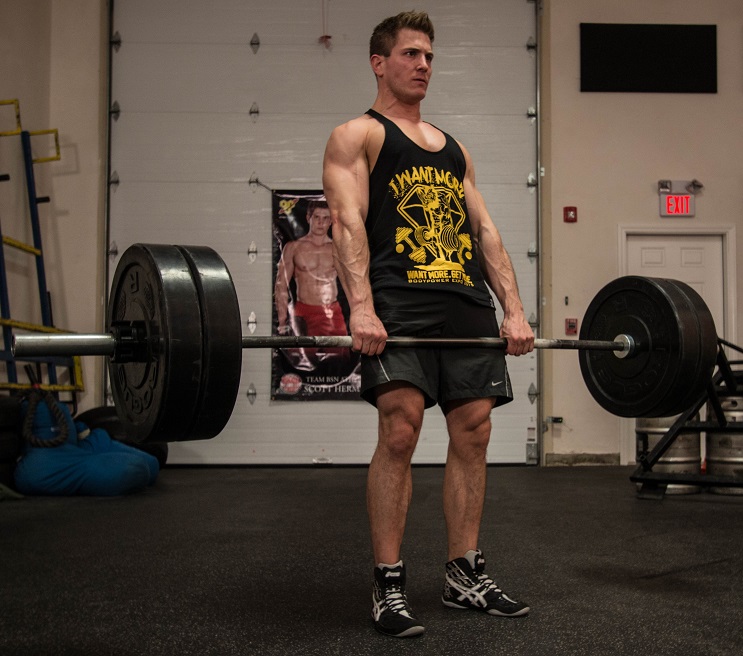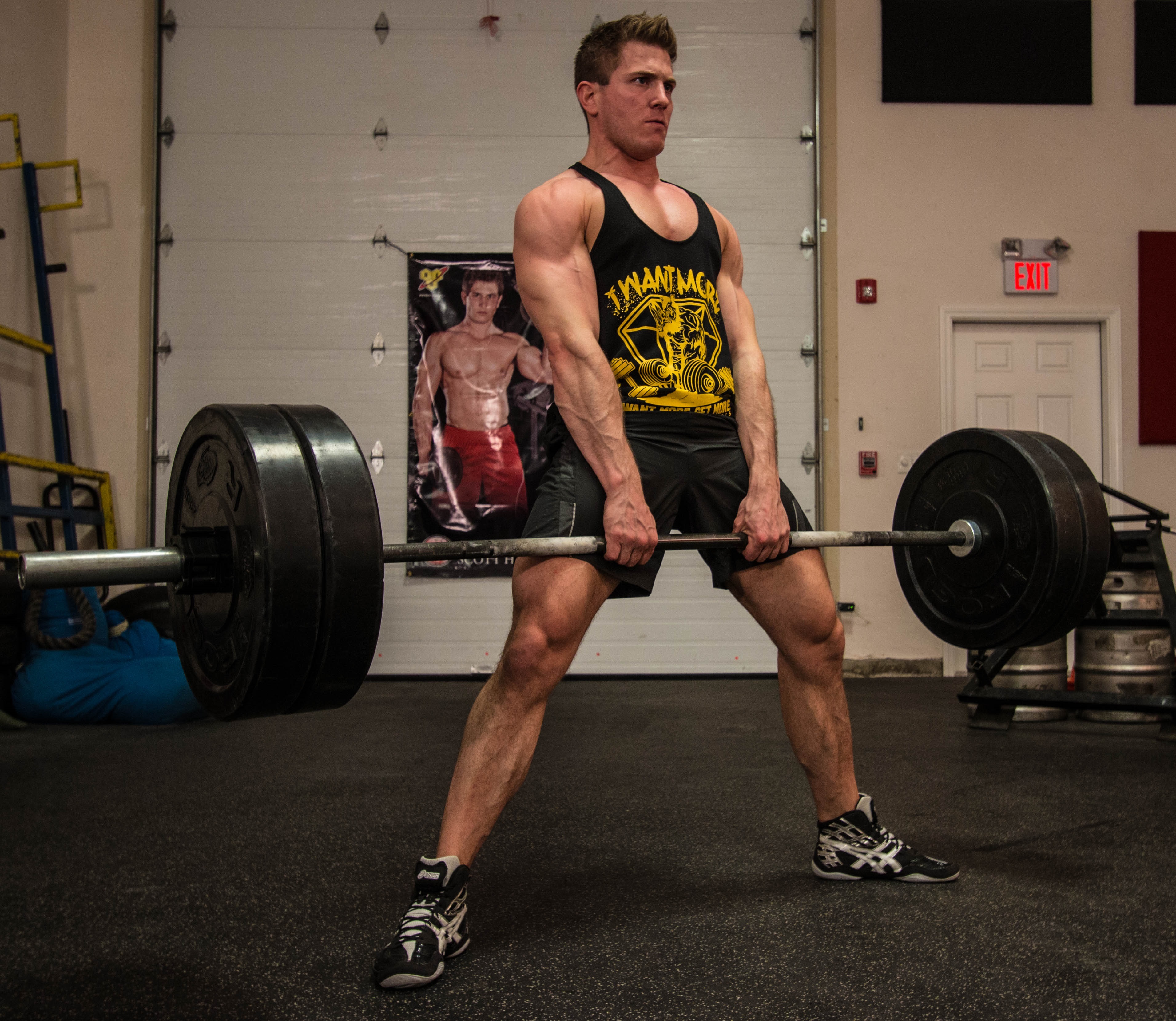SUMO DEADLIFT VS CONVENTIONAL DEADLIFT
WHICH BUILDS MORE POWER & STRENGTH?
Hey everyone, in our last VERSUS SERIES article we compared the Dumbbell Bicep Curl VS the Hammer Curl. If you missed it, CLICK HERE.
This week we are going to compare the CONVENTIONAL DEADLIFT VS THE SUMO DEADLIFT. The debate about which is better is a question that seems to always come up. But which variation is going to help you build the most overall strength and power to lift the most weight? Well, let’s find out.

CONVENTIONAL DEADLIFT

The conventional deadlift is up first. To perform this movement approach the barbell with your feet close together, either straight forward or slightly angled, and about shoulder width apart max. As you reach down to grab the barbell, keep your arms outside of your knees, chest up, core tight, maintain a neutral spine, lock your elbows and flex your lats. Once in place you are going to push through your feet and hips to lift the barbell off the ground until you lockout at the top. Now if you have never done this movement before, really focus on flexing your glutes to push through your hips at the sticking point of the exercise which is as the barbell is pulled up and over your knees. Because the exercise involves pushing through the hips we will be activating the surrounding hip and pelvic muscles.
So what is happening inside your body during a conventional deadlift? First off, this movement places more emphasis on your posterior chain, mainly your back (lower back), hamstrings and spinal erectors when compared to the sumo deadlift. So if you have a very strong lower back and hamstrings, there is a good chance that you will be able to deadlift more using this method. Other major muscle groups being used here are your gluteus maximus, quadriceps and adductors and when compared to the sumo deadlift you will have greater muscle activity in your gastrocnemius which is one if the two major muscle groups that make up your calf.
SUMO DEADLIFT

Now let’s take a look at the sumo deadlift. The set-up here is quite different and a bit more precise so you can’t just grip it and rip it like the conventional deadlift. Approach the barbell and stand with a wide stance. Your feet should be angled along the line that runs from the middle of your upper thigh to the middle of your ankle. This is important because if the angle of your feet is off you can put unwanted stress on your knees and actually reduce your leverage which is what you need for a max lift. Once in place you are going to grab the barbell with both hands, but this time you are going to have your arms on the inside of your knees. Keep your core tight, maintain a neutral spine, lock your arms, flex your lats and push through your heels and hips to lift the barbell off the floor.
As you perform the movement you are probably going to notice right away that there is less stress on your lower back and the barbell did not travel as far. So if you are experiencing lower back issues or have a history of back problems, the sumo deadlift may be a better option for you. As for inside your body, we are still activating your gluteus maximus, hamstrings, quadriceps, adductors and gastrocnemius but there will be a bit more emphasis placed on your quadriceps and upper traps to perform the movement.
THE QUESTION: WHICH IS BEST?
So which is the best variation? Well, first just like to address the people who think the sumo deadlift is “cheating”. This variation is fully accepted in powerlifting competitions and at the end of the day the method you pick comes down to which variation you can use to lift the most weight.
But, to determine which deadlift variation is going to help you build the most overall strength and power to lift the most weight, there are quite a few things that need to be considered. The main point to keep in mind is that the deadlift variation you chose should be one that works best with your body type, injury history and goal. For example, there are competitive powerlifters that have broken records with both variations so to say one is better than the other comes down to personal preference.
Let’s begin by talking about some basic information that can help you decide where to start and the most basic breakdown has to do with your flexibility, mobility, and length of your limbs and torso. This is important because you will clearly be weakest performing the variation of deadlift that you cannot properly set-up for.
For example:
Those who excel at the conventional deadlift usually have a short torso and long arms and those who do best with the sumo deadlift usually have a long torso and short arms. But the main concern should be which style helps to play on your strengths to draw out your biggest lift.
If you have weak hamstrings and poor hip flexibility, the conventional deadlift may prove to be a harder movement for you to master. But the advantages for someone with strong hamstrings and good flexibility is that they can usually pull the weight off the floor extremely fast with the conventional deadlift. But due to the high hip position, may struggle with the lockout. In contrast, someone who pulls sumo with a lower hip position is used to struggling with weights off the floor, but locking out is much easier.
With that in mind, let’s do a final comparison:
SUMO DEADLIFT:
- Advantages
- The barbell has less distance to travel
- The movement requires less hip flexibility
- Lockout at the top is easier
- Places less stress on lower back
- Disadvantages
- The initial pull off the floor is harder.
- Getting into position requires a bit more time to set-up
CONVENTIAL DEADLIFT
- Advantages
- Set-up is easy for those who like to “grip it and rip it”
- The initial pull off the floor is easier
- Because the conventional deadlift places more emphasis on your back and spinal erectors, in many cases, it will have the most carryover for building overall strength in the backside of your body, or posterior chain, and help with getting stronger on other exercises.
- Disadvantages
- Barbell has more distance to travel.
- Requires more flexibility, hip mobility and hamstring strength
- Lockout at the top is harder.
- Places more stress on lower back
SO WHICH BUILDS MORE POWER & STRENGTH?
At the end of the day you need to pick the variation that is going to have the most carryover into everything else you do and the movement patterns you train for. For example if you are training for low reps or pure strength pick the variation that best suits you which could be sumo or conventional depending on which advantages or disadvantages apply to you.. But if you are, for example, a crossfitter and train for high reps, conventional deadlifting may be your best option because of the easy set-up for the “touch-and-go” reps.
If your goal is to bring up your weakness and you have lower back and general posterior chain strengthening to do, conventional deadlifts will help strengthen these areas. But if you have weak hips, sumo deadlifts will help strengthen them and if you are dealing with a back injury the sumo deadlift will allow you to continue lifting while you heal up.
Lastly, if you are training more frequently you may want to pick the variation you can recover the quickest from. Or like many competitive lifters, power or strongman, you may want to train using both methods to either eliminate weaknesses or train harder. For example, if you lift conventional, but your back and hamstrings are sore from heavy lifting, you could switch to the sumo deadlift to give your lower back a rest and keep training.
Also, keep in mind that if you decided to switch right now that doesn’t mean that you might magically pull more weight. Even experienced deadlifters who have spent years training in one style may see a large drop in their one rep max when making the switch. But the switch may be necessary to help you overcome any weaknesses you might have. So for the beginners reading this article, try both before making a decision to which variation you are going to stick with.
FINAL TIP: UNLOCK MORE POWER!
Before we end this video, there is one crucial tip that I would like to share with you that will help you pull more weight whether you are lifting SUMO or CONVENTIONAL. Once you get into position to start the lift, I want you to visualize PUSHING your feet through the floor and NOT PULLING the weight off the ground.
When you visualize PULLING the barbell, what usually happens is your hips shoot up first which causes you to learn forward, roll your shoulders and disengage your back. This results in less power and usually a slow grind when pulling the weight off the floor. If you change your mindset to pushing through the floor or pushing the Earth down, which is what I like to do, it can completely alter how your body reacts to pulling the weight off the floor. Instead of falling forward and losing proper form, you will stay tight and upright and generate much more speed and power for a heavier lift. This is because if you focus on pushing through your heels your hips will drive into the bar instead of shooting up first.
Now get out there, experiment with both variations, be sure to come back and let me know how you feel in the comment section below and remember, more good stuff coming soon!








